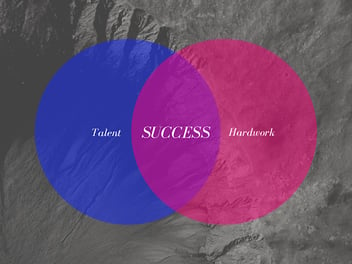
I spent my time at work holed up in my executive office—inviting only senior-level people in for their opinions, or to see what they were working on.
When I travelled, I flew alone in business class while my coworkers were relegated to economy class.
And when it was time for the most basic and ubiquitous of human needs, food—I dined only with...you guessed it...my most senior level employees.
I was removed from the organization, I was distant—I couldn’t be bothered with who people were, what their goals were, what they needed to be successful, or any of the brilliant ideas they might have.
I couldn’t even be bothered with names.
Then I learned about servant leadership. I started small.
I got out of my office, I started mingling and taking a genuine interest in what people were working on.
When we travelled everyone flew business class, together.
And when it came to lunch breaks and late night meals, these became family meals. I dined with my people and I served them—I became a literal servant leader. I listened to them, laughed with them, I learned their names, I got to know them—like really got to know them.
My executive office became everyone's office, traveling comfortably became everyone’s luxury—and there was always room for everyone at my table.
These were small steps, but they were my first steps. They were foundational to empowering everyone to speak openly and work together to build a more just and more diverse, inclusive culture at Softway.
Shifting your mind from “I lead” to “I serve”
Servant leadership characteristics begins with altruism—the practice of selfless concern for the well-being of others.
Or in animal kingdom terms: the behaviors of an animal that benefit another at its own expense (we’re all only animals, after all).
This is the first step. A servant leader must outright reject the idea of self, and prioritize the needs of others before their own—even at their own expense. They must permanently erase “I lead”, and wholeheartedly embrace “I serve”.
But, why?
Because, inequitable cultures and virtuous ones, are both impelled by the mindsets and behaviors of individual beings, i.e. leaders.
When leaders set aside their desires, their needs, their ambitions—when they remove themselves from the proverbial table, it creates space. Within that space employees can align and start building a vision for the future that is inclusive and representative of everyone.
Until everyone has a seat at the table, leaders cannot be true allies, advocates—or servants to their people and their needs.
Servant leadership: I serve.
Servant leadership is a journey
Servant leadership begins with a visceral and purposeful declaration: “The purpose of my existence as a leader, is to serve.” That conscious choice enables leaders to aspire and actually serve and influence meaningful change in their organizations.
But know now: servant leadership is a journey with a beginning and no end. It’s about constant improvement and introspection—it’s a state of permanent transformation.
The same is true about culture. There is no point of completion, no closing chapters, or final brushstrokes—an equitable, inclusive culture is an ever evolving masterpiece. Dreamed up by those you serve.
Upholding diversity, inclusion, and belonging begins with leadership, more specifically servant leadership.
But sustainment can only begin once everyone has a seat at the table. One leader can make the decision to be a servant leader. That decision then has the ability to act as a catalyst for the rest of the organization to follow.
To create an environment where culture thrives, and diverse perspectives grow together, leaders need to shift their minds from “I lead” to “I serve”.
Change happens one person at a time—it begins at the top.



